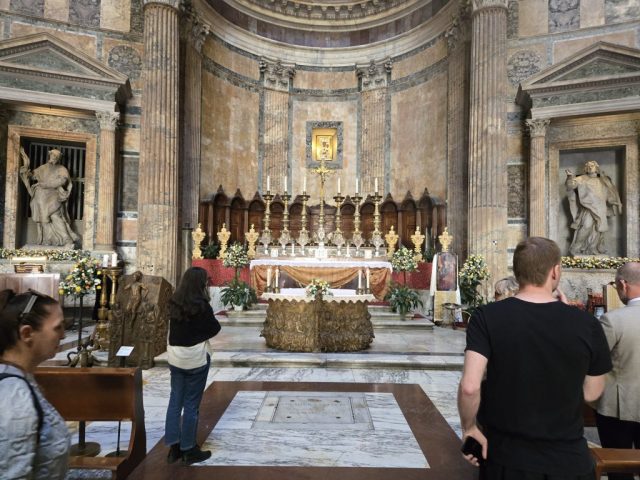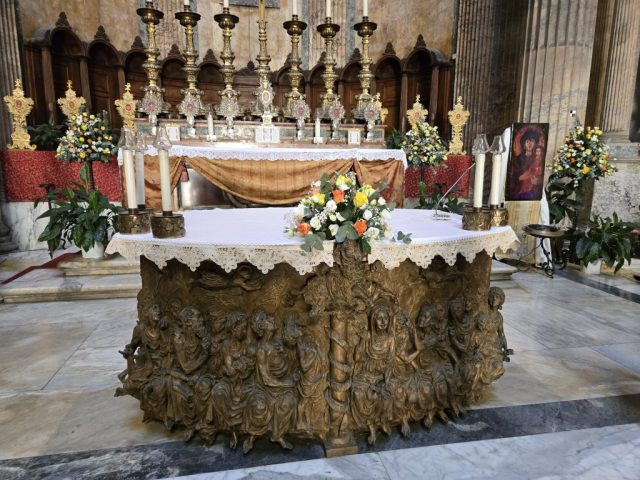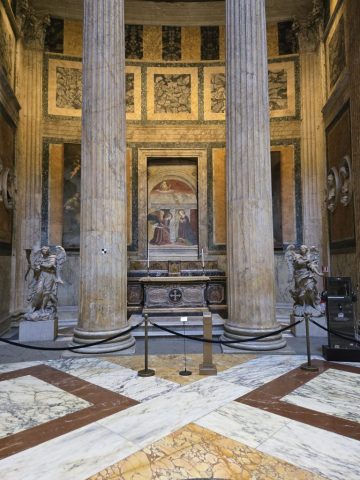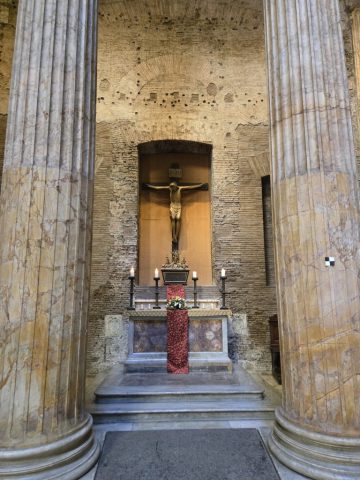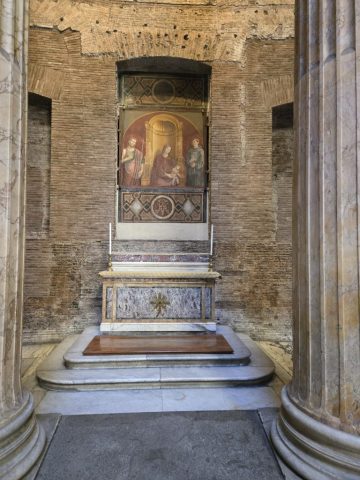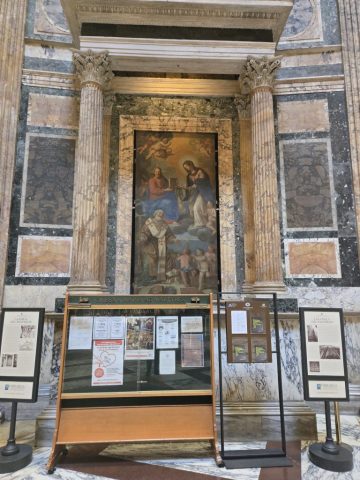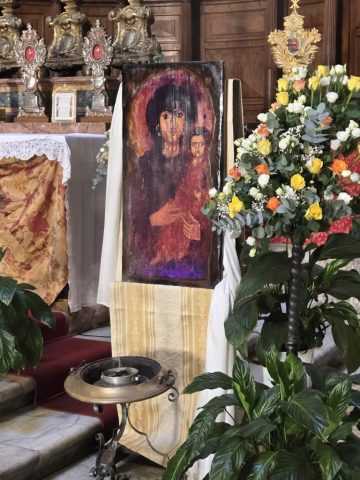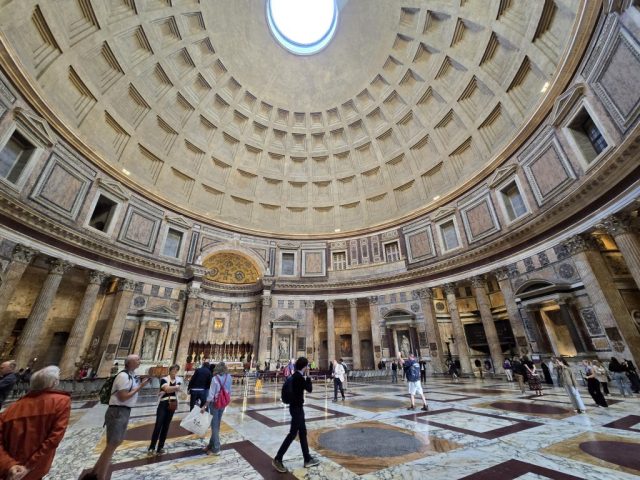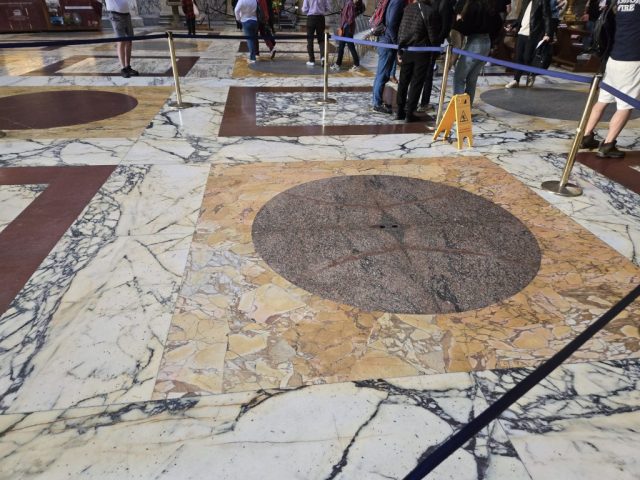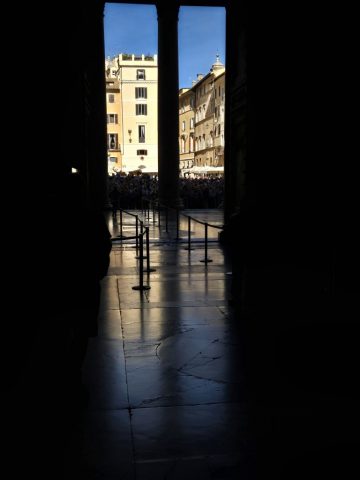The Pantheon
It’s actually an active & functioning Catholic Church!
As I was standing in the line for 10:30 Mass on All Saints Day (I mean, where better to attend Mass on the Feast of All Saints than to go to the place where it all began in 609ad!) I heard some English speaking visitors bemoaning the fact that the Pantheon was being closed to visitors so Mass could be celebrated. “I didn’t even know this place was an active functioning church” the gentleman said. He then went on to lament that it was being closed until NOON → and he emphasized the word ‘noon’ rather dramatically. Inside I was thinking that 10:30 Mass would go until about 11:30, and we’d have about 30 minutes inside the Pantheon to take pictures before it reopened to the public.
I never want to hear anyone complain about a Mass that goes 62 or 65 minutes (which is a rarity for me, even on Christmas or Easter); the Mass in the Pantheon took the full 90 allotted minutes! At 2 minutes to Noon, Mass ended and we were allowed to scurry through the Basilica as they prepared to let in guests. I took every opportunity to snap pictures while there were the 150 of us who went to Mass were the sole visitors to the place.
THE CHRISTIAN HISTORY OF THE PANTHEON:
A significant moment in the “victory of the cross” came when the most illustrious pagan shrine of ancient Rome (today known as the Pantheon) was transformed into a Christian church. In the year 608 the Pantheon was given to Pope Boniface IV (608-15) for use as a church. The transfer was granted by Phocas, Emperor of Byzantium and overlord of Rome; by the 600’s there were no more “Roman” emperors. Pope Boniface re-dedicated the building to “ Mary and all the Saints and Martyrs”.
On the day of its consecration, 28 wagons of martyrs’ were transported there; the relics were taken from various cemeteries. This event is the origin of All Saints Day, instituted by Pope Gregory IV in the 9th century. (Note: The day of its consecration was in 609.) This act of consecration was an impressive statement of Christianity’s definitive triumph over pagan Rome.
With the Christianization of the building ,the purpose of the oculus was redefined; it is now stands as a reminder that the light and grace spreading through the world emanates from one eternal and omniscient source.
Other historical moments pertinent to the Pantheon:
- In 663 the Byzantine Emperor Constans II stripped the roof of its gilded bronze tiles. Pope Gregory III (731-41) replaced these with lead sheeting.
- The Barbarini Pope Urban VIII (1623-44) took the bronze from the beams in the portico to use for the Baldacchino in St. Peter’s and for the canons in Castel Sant’Angelo.
In 1878 it became the chosen site for the tombs of the kings of Italy.
